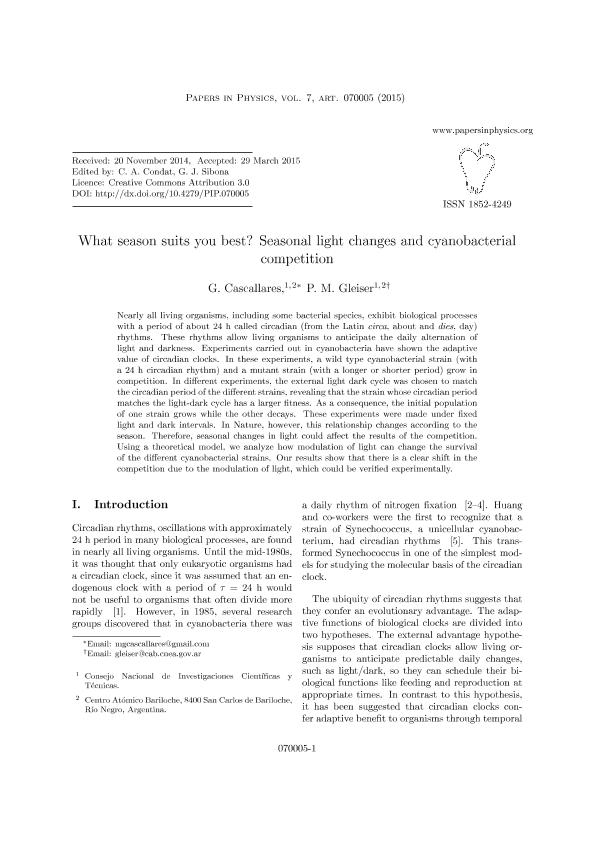Artículo
What season suits you best? Seasonal light changes and cyanobacterial competition
Fecha de publicación:
29/03/2015
Editorial:
Instituto de Física de Líquidos y Sistemas Biológicos
Revista:
Papers in Physics
ISSN:
1852-4249
Idioma:
Inglés
Tipo de recurso:
Artículo publicado
Clasificación temática:
Resumen
Nearly all living organisms, including some bacterial species, exhibit biological processes with a period of about 24 h called circadian (from the Latin circa, about and dies, day) rhythms. These rhythms allow living organisms to anticipate the daily alternation of light and darkness. Experiments carried out in cyanobacteria have shown the adaptive value of circadian clocks. In theseexperiments, a wild type cyanobacterial strain (with a 24 h circadian rhythm) and a mutantstrain (with a longer or shorter period) grow in competition. In different experiments, the external light dark cycle was chosen to match the circadian period of the different strains, revealing that the strain whose circadian period matches the light-dark cycle has a larger fitness. As a consequence, the initial population of one strain grows while the other decays. These experiments were made under fixed light and dark intervals. In Nature, however, this relationship changes according to the season. Therefore, seasonalchanges in light could affect the results of the competition. Using a theoretical model, we analyze how modulation of light can change the survival of the different cyanobacterial strains. Our results show that there is a clear shift in the competition due to the modulation of light, which could be verified experimentally.
Palabras clave:
Cyanobacteria
,
Curcadian Rhythms
Archivos asociados
Licencia
Identificadores
Colecciones
Articulos(CCT - PATAGONIA NORTE)
Articulos de CTRO.CIENTIFICO TECNOL.CONICET - PATAGONIA NORTE
Articulos de CTRO.CIENTIFICO TECNOL.CONICET - PATAGONIA NORTE
Citación
Cascallares, Maria Guadalupe; Gleiser, Pablo Martin; What season suits you best? Seasonal light changes and cyanobacterial competition; Instituto de Física de Líquidos y Sistemas Biológicos; Papers in Physics; 7; 29-3-2015; 1-6
Compartir
Altmétricas




